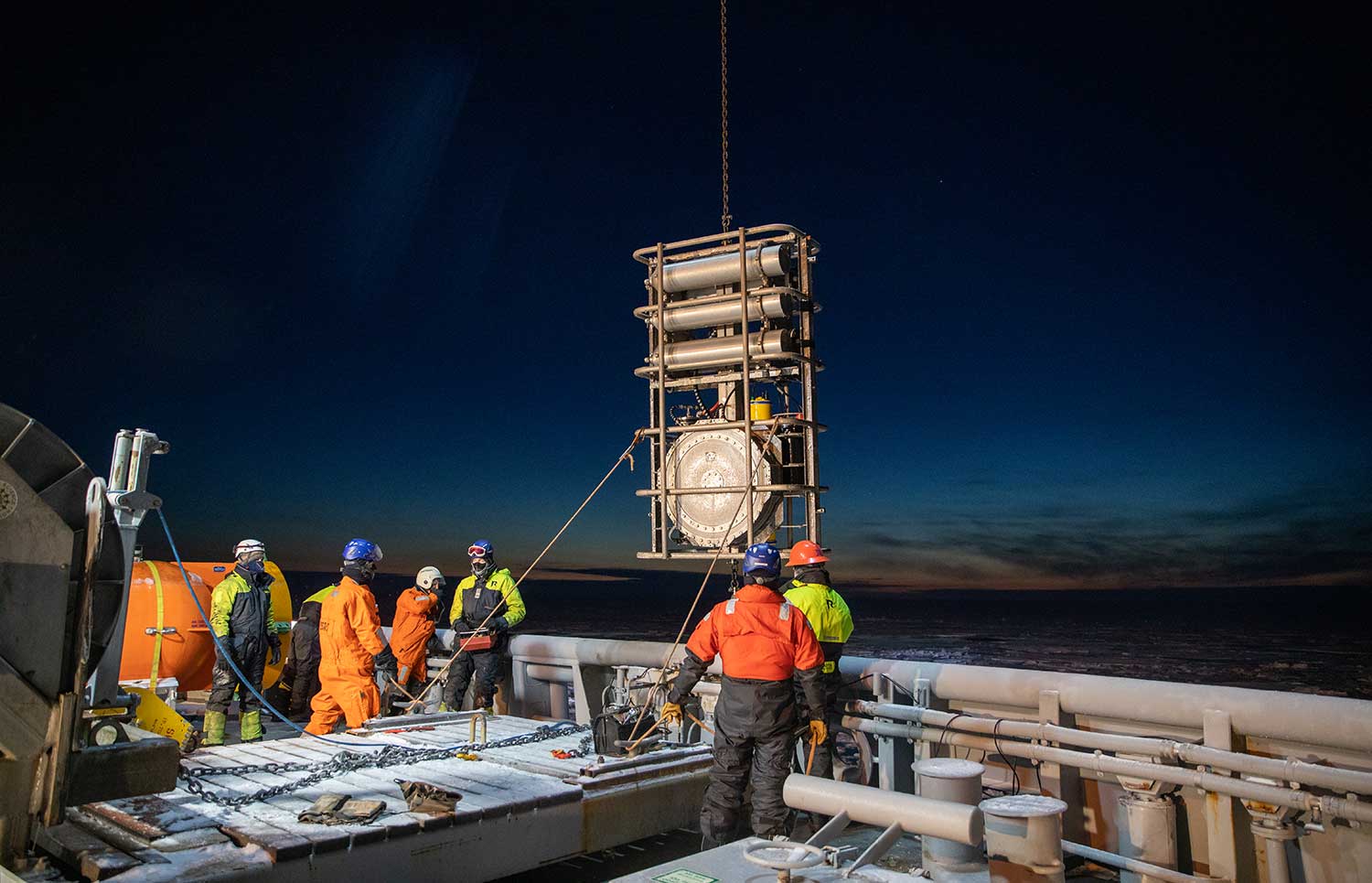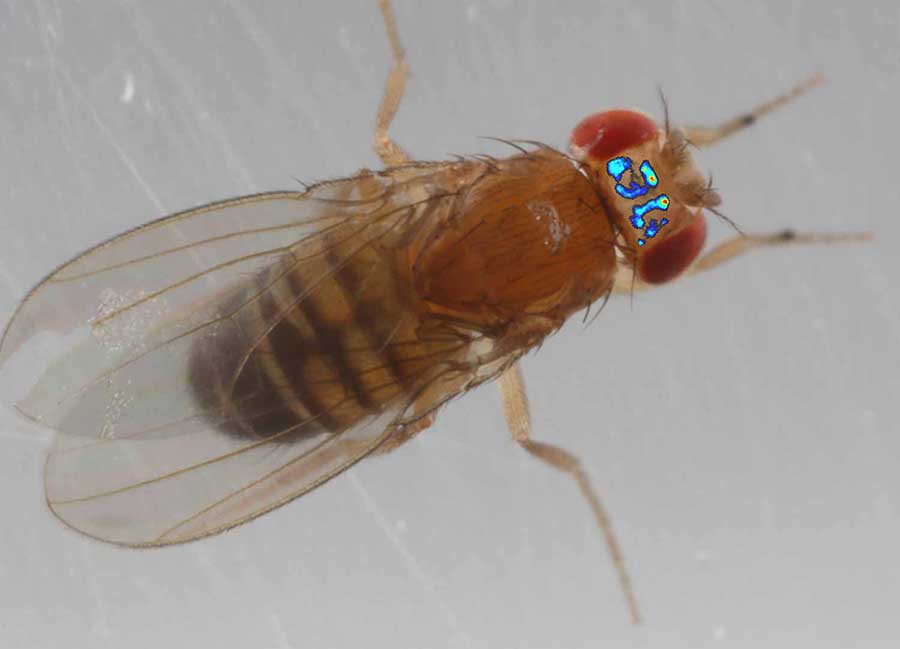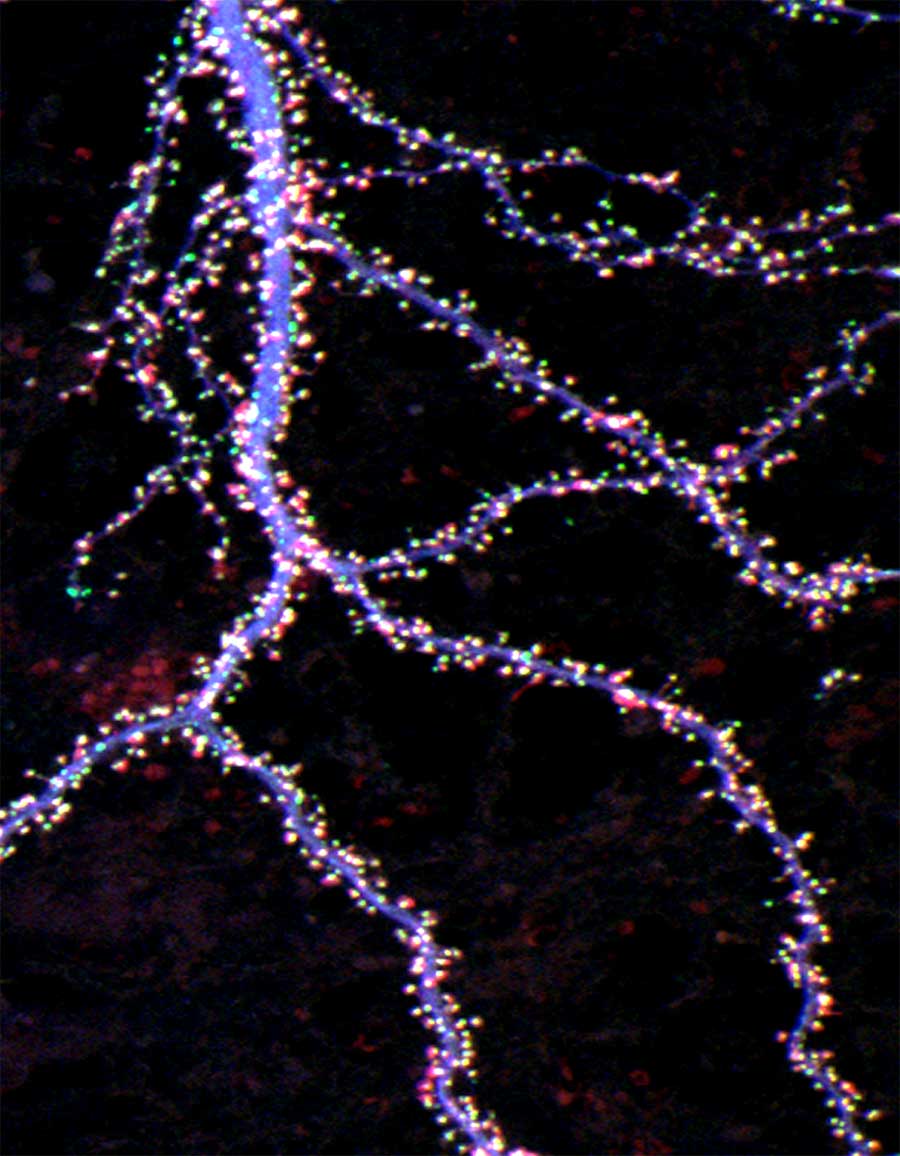
By:
- Michelle Franklin and Robert Monroe
Published Date
By:
- Michelle Franklin and Robert Monroe
Share This:

The DURIP awarded to Matthew Dzieciuch will fund acquisition of a low-frequency sound source. The instrument will complement two existing sources that were part of the Coordinated Arctic Acoustic Thermometry Experiment (CAATEX) including the one pictured here. Photo by Daniel Fatnes, Norwegian Coast Guard.
UC San Diego Receives 7 DURIP Awards from Department of Defense
University tops UC system in number of awards
Scientists at the University of California San Diego received seven Defense University Research Instrumentation Program (DURIP) awards from the Department of Defense (DOD).
The awards totaling more than $3 million support projects ranging from measuring energy expenditure in the brain and studying quantum materials to understanding the neurobiology of the fruit fly and measuring the physics of what happens where the atmosphere meets the ocean surface. The seven awards were the largest number received by a University of California campus. UCLA and UC Berkeley received four each.

Illustration of recorded brain activity from an untethered, freely moving fly.CR: Takeo Katsuki/Kavli Institute of Brain and Mind.
“UC San Diego garnered more DURIP awards than any other university this year,” said UC San Diego Chancellor Pradeep K. Khosla. “It is a true testament to the value the DOD places on the groundbreaking research and innovation that UC San Diego is known for. The quality of our annual $1.45 billion dollars in sponsored research has placed UC San Diego at the top of the list of the world’s most prestigious research universities.”
The DURIP awards program is jointly administered by the Air Force Office of Scientific Research, Army Research Office and Office of Naval Research. The Department seeks specific proposals from university investigators conducting foundational science and engineering research relevant to national defense, while also ensuring that the United States retains its technological edge and that the nation’s science, technology, engineering and mathematics (STEM) workforce remains strong.
“DURIP awards help maintain the cutting-edge capabilities of our universities and provide research infrastructure to enable the most creative scientific minds in the country to extend the boundaries of science and technology,” said Bindu Nair, director of the Basic Research Office, Office of the Undersecretary of Defense for Research and Engineering.
UC San Diego’s 2021 DURIP awardees:
Monica Allen, assistant professor of physics and principal investigator of the Allen Lab. Allen’s award will be used to develop instrumentation for high-throughput characterization of quantum materials at low temperatures in the milliKelvin regime. The instrument will open up a new capacity to probe quantum phenomena in emerging materials, such as two-dimensional crystals, topological materials and exotic superconductors.
Matthew Dzieciuch, physical oceanographer. The award will fund the purchase of a third low-frequency sound source for use in the Coordinated Arctic Acoustic Thermometry Experiment (CAATEX). With Norwegian colleagues, Dzieciuch is measuring heat content in the Arctic Ocean, comparing their data to that collected by a similar project done 25 years ago. The project is documenting rapid environmental changes there.
Dhruv Grover, research faculty member at the Kavli Institute for Brain and Mind. Grover’s DURIP award will support development of a first-of-a-kind microscope to record brain-wide neural activity from freely walking fruit flies at single-cell resolution. Such a system will make possible visualizing brain activity during complex fly behaviors such as mating, aggression and even sleep. Further, it will allow chronic monitoring of neural activity from the same individual over days, allowing studies of long-term plasticity and aging in the nervous system, experiments that are challenging if not impossible to perform with current state-of-the-art methods.

Halpain and her colleagues are using advanced fluorescence microscopy to measure energy demand within single synapses, which are less than one femtoliter in volume.
Shelley Halpain, professor of neurobiology. Given its massive processing power, the brain uses its limited energy supply incredibly efficiently. Halpain’s DURIP-supported experiments will explore how the brain tightly couples energy metabolism to changes in the strength of synapses, the tiny connections of brain circuitry. She and her colleagues are using advanced fluorescence microscopy to measure energy demand within single synapses, which are less than one femtoliter (500 times smaller than a single grain of salt) in volume. Their findings may help inform the design of efficient, bio-inspired information processing systems.
William Hodgkiss, marine acoustician. Funds will support fabrication of an acoustic source tow system for transmissions in the 30-2000 Hz frequency band. The system—which includes two source transducers, a mounting apparatus, monitor hydrophone, depth sensor and tow cable—will enable making calibrated measurements of acoustic propagation that can be used for understanding the interaction of sound with the sea surface and seafloor as well as estimating the acoustic properties of the seafloor including layering and the composition of those layers.
Luc Lenain, physical oceanographer. The award to Lenain’s Air-Sea Interaction Laboratory will be used to develop novel oceanic microstructure profilers to quantify the strength of turbulence and the resulting mixing processes in the ocean, specifically designed for autonomous surface vehicles. These systems will be installed on instrumented Wave Gliders, and towed from a new fast, autonomous ship under development at the Air-Sea Interaction Laboratory. These vehicles will be used in forthcoming ONR-funded research on air-sea interaction and upper-ocean processes, crucial to understanding Earth's weather and climate.
Sophia Merrifield, physical oceanographer. Merrifield and fellow principal investigator Eric Terrill will use the award to develop sensing of oceanic and atmospheric boundary layers. Robotic systems that operate on, under and above the ocean's surface will be outfitted with advanced sensing payloads and software for adaptive sampling of the environment. The systems will operate within the footprint of an instrumentation radar which will be used to queue the robots.
Additional awards may be forthcoming.
Share This:
You May Also Like
Stay in the Know
Keep up with all the latest from UC San Diego. Subscribe to the newsletter today.


